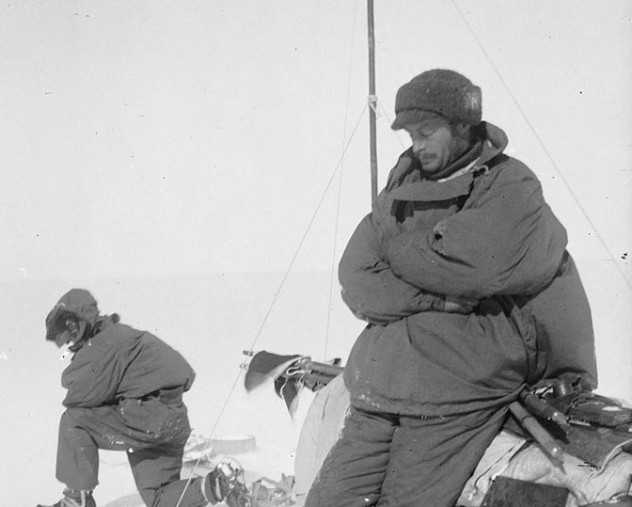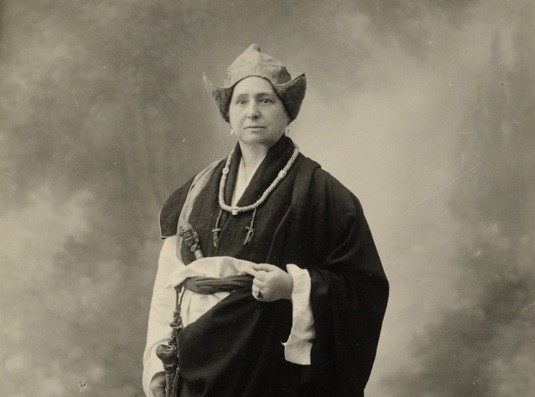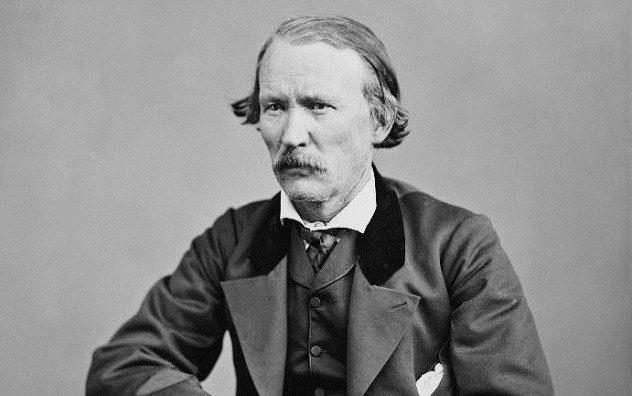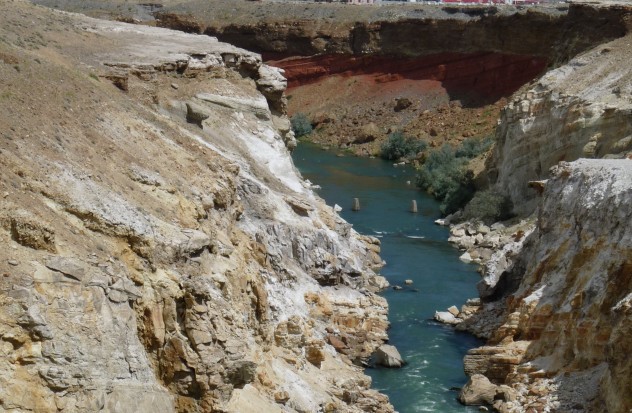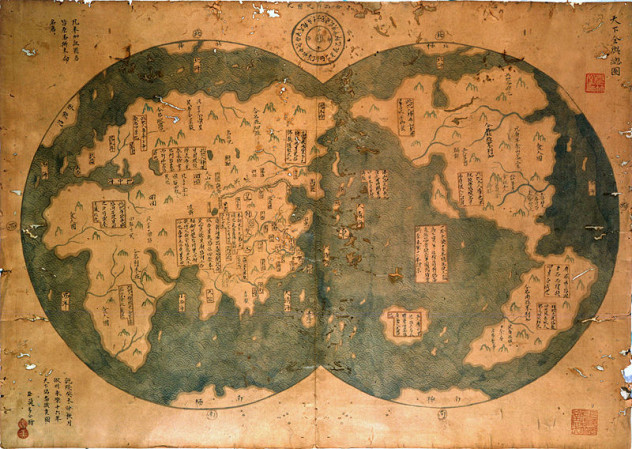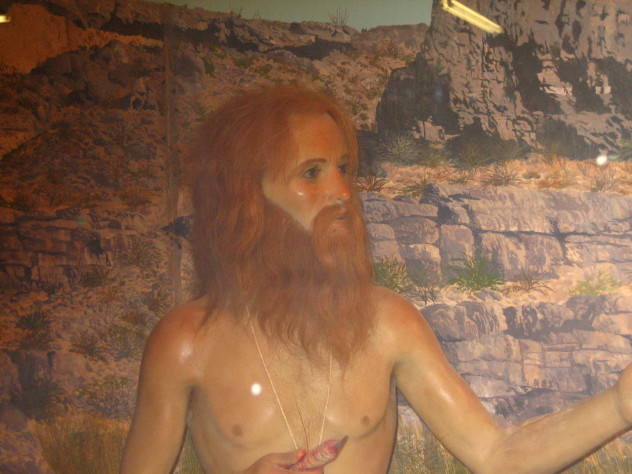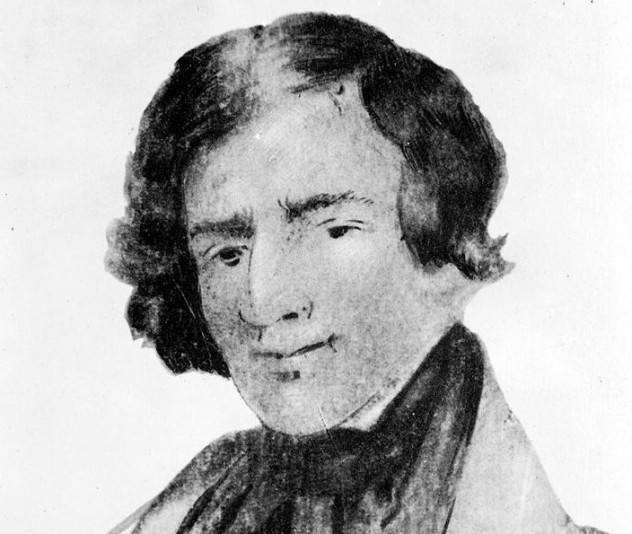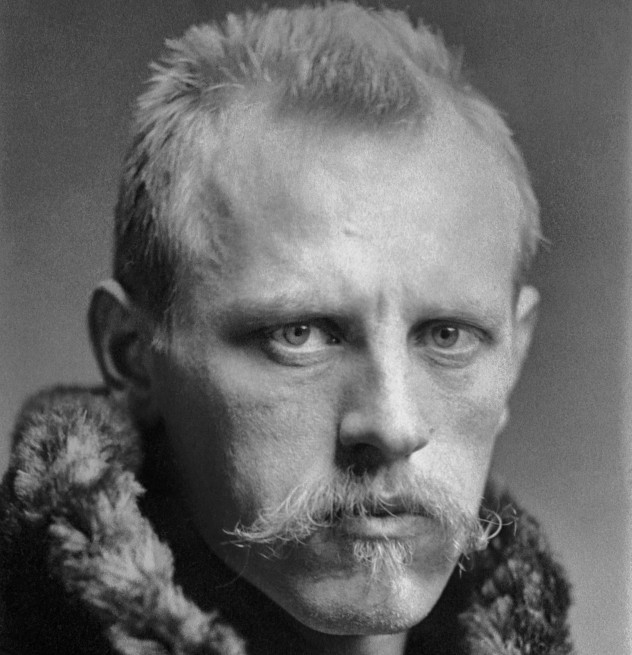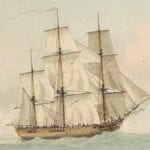10Douglas Mawson
Douglas Mawson is considered to be one of the key explorers during the Heroic Age of Antarctic Exploration. In fact, Mawson was a part of the famed Nimrod Expedition, led by Ernest Shackleton, that was the first to try and reach the South Pole. In 1911, Mawson was put in charge of his own team called the Australasian Antarctic Expedition. The entire endeavor would last over a year. When it was finally time to journey to the South Pole, a team was put together, comprised of Mawson, British officer Belgrave Ninnis, and Swiss champion skier Xavier Mertz. Their goal was to journey over to Scott’s base and link the two regions. Their trek became doomed about 35 days in when Ninnis fell into a crevasse, taking most of the food and dogs with him. Now, Mawson and Mertz were left with just 10 days of food and 35 days until the nearest base. The two were forced to eat the remaining dogs and walk back. The bad food and the terrible conditions soon took the life of Mertz. Convinced he wouldn’t make it back, Mawson kept taking scientific notes. He journeyed through the snow, only bolstered by the idea of seeing his fiance again. At one point, he fell down in a crevasse (later named Mertz Glacier), survived, and climbed back up. Two weeks later, he found a cache of supplies in a snow cairn. The provisions lasted him until he made it back to his base three months later.
9Alexandra David-Neel
Alexandra David-Neel had an itch to explore ever since she was little, when she lived in Brussels. At one point, when she was 18, she climbed on her bicycle and rode it all the way to Spain. As a woman, she tried to marry and settle down, but it just wasn’t for her. In 1911, she left her husband, Philippe Neel, and went on a journey through Asia. She first went to India, staying in Sikkim where she absorbed the culture. She learned the Tibetan language, started practicing yoga, and became the first European woman to meet the Dalai Lama. She even adopted a 14-year-old monk named Aphur Yongden. She then visited the forbidden city of Lhasa in Tibet, which was mostly off-limits to foreigners, especially women. For this, she got kicked out of Sikkim by the British ambassador. By this point, she had fallen completely in love with Tibet, and going back to Europe wasn’t an option. Instead, she and Yongden went to Japan. There, they met a Buddhist monk who told them he went to Lhasa by disguising himself as a Chinese physician. David-Neel and Yongden decided to try the same strategy, so they embarked on a 2,000-mile journey to Lhasa. In 1923, authorities discovered the duo traveling toward Tibet, and they were sent back. So they tried again in 1924. This time they had a clever ruse: They pretended to be Buddhist pilgrims. In order to pass as a Tibetan woman, David-Neel had to darken her skin every day. The trick worked and David-Neel spent two months in Lhasa before returning to Europe and writing about her exploits abroad.
8Kit Carson
Kit Carson was the prototypical frontiersman of his day, despite the fact that he looked and acted nothing like you would expect. He was clean-shaven and well groomed, had an unassuming manner, but showed implacable courage when the need arose. He was known for being a man of his word and maintained friendly relationships with various Native American tribes, even taking native wives on two separate occasions. Most of his fame was attained after 1842, when John C. Fremont hired him as a guide. Fremont was a politician who would go on to become the first presidential candidate for the newly formed Republican party. Before this, he led several expeditions into the American West and used Carson as guide for all of them. Afterward, Fremont would speak highly of Carson in his reports, which is what gained him the image of an American folk hero who would go on to appear in numerous Western novels. While on such a journey, the Mexican-American War broke out and Fremont decided to join the Bear Flag Revolt. His group lent assistance to the American settlers in the area, and Carson was the one who led them into battle. After a victory, Fremont asked Carson to return to Washington to deliver the news of their success. He only made it as far as New Mexico before being recruited again, this time by General Stephen Kearny, who required his services as a guide in order to defeat the Mexican forces.
7John Colter
Colter’s early fame came when he took part in one of the most famous expeditions of all time, alongside Lewis and Clark. Although he was an integral part of that expedition, as one of the best scouts and hunters in the group, Colter never actually got to see that journey to the finish. He was honorably discharged two months early in order to join up with two fur trappers and travel up the Missouri. This partnership didn’t last long, but Colter soon found himself working with another fur trapper called Manuel Lisa. It was during this time that Colter became the first man of European descent to explore Yellowstone. He gave firsthand descriptions of the thermal lakes and geysers present there, but nobody believed him that such a place existed. One of the geyser basins he visited is still known as Colter’s Hell (pictured above) even though it’s inactive today. One famous incident became known as Colter’s Run. In 1809, while trapping with John Potts, a fellow Lewis and Clark alumnus, the duo were attacked by members of the Blackfoot tribe. Potts was killed by a hail of arrows while trying to escape. Colter was captured, stripped naked, and told to run, forced to take part in a perverted game of “cat and mouse.” Against all odds, Colter managed to outrun the Blackfeet and survived for a whole week in the wilderness, until he reached an American settlement, despite being naked and having no food or equipment.
6Tenzing Norgay
On May 29, 1953, Tenzing Norgay and Edmund Hillary made history by becoming the first people to reach the summit of Mount Everest. Of course, since Tenzing was “only” a Sherpa guide, most of the fame went to Hillary. Sherpa Tenzing became well known and respected in his homeland of Nepal and in India, but remained a relatively obscure figure in the West. By the time the expedition took place, Tenzing was already an experienced mountaineer. This marked his seventh time attempting to climb Everest, each time getting a little closer to the top. On this expedition, Hillary and Tenzing weren’t the first team to attempt to reach the summit. John Hunt, the man in charge of the expedition, initially directed two other climbers, Charles Evans and Tom Bourdillon, to make the first attempt. They made it to within 90 vertical meters (300 ft) of the summit before being forced to turn back due to an error with Evans’s oxygen system. Next came Hillary’s turn. He insisted on having Tenzing as his partner because he had actually saved Hillary’s life earlier in the expedition when Hillary fell into a crevasse. Tenzing had been walking behind him and had the presence of mind to thrust his axe into the ice and grab onto the rope, which was tied around Hillary’s waist. He managed to save Hillary, just before his body smashed into the icy depths of the crevasse.
5Zheng He
A 14th-century Chinese explorer during the Ming Dynasty, Zheng He has the distinction of being the only eunuch on this list. He was active during a time when China was greatly expanding its knowledge of the world due to thriving trade relations with neighboring cultures. It was decided that improving trade relations, as well as securing Chinese dominance over the Indian Ocean, was a top priority. A giant armada was assembled, captained by Zheng He, who had risen to the rank of admiral by then. The size of the Ming Armada was something unparalleled up until that point. It was comprised of huge junks with nine masts, surrounded by dozens of smaller transport ships, patrol boats, and water tankers. The largest ships in the flotilla were over 120 meters (400 ft) in length. In total, the armada had a crew of 27,000 people, both sailors and soldiers. The boats were loaded with prized Chinese silk and porcelain, and went from port to port, establishing trade routes for valued goods such as spices, pearls, and ivory. In total, Zheng He undertook seven expeditions between 1405 and his death in 1433. The first three expeditions were all to India. The fourth crossed the Arabian Sea into Persia and the last four made it all the way to Africa. In the wake of the Treasure Fleet, as it came to be known, dozens of states sent tributes back to China.
4Alvar Nunez Cabeza De Vaca
In 1526, the Spanish were looking to take expeditions into the New World. After a year of securing funds, the expedition was ready to set sail. A man named Panfilo de Narvaez commanded a crew of 600, most of them soldiers. His objective was to establish a base in Florida and develop two new towns, protected by military garrisons. Alvar Nunez Cabeza de Vaca was second in command, appointed treasurer to ensure that the Spanish Crown received its cut of the wealth accumulated during the trip. Unfortunately, there would be no wealth because the Narvaez expedition would turn out to be a complete disaster. Before even reaching Florida, one ship—along with all the men and supplies onboard—was lost to a storm. Eventually, about 400 men reached what is now Tampa Bay in March 1528. However, between more storms and violent Native Americans, only 80 men made it out of Florida. By this time, Narvaez was dead and de Vaca was in charge. Over the next eight years, the expedition would make its way to the Gulf Coast, with its members becoming the first Europeans to cross Texas. Starvation and disease took their toll and only four members of the expedition would ever get to return to Spain. During the expedition, de Vaca assimilated with Native American culture and became sensitive to the plight of the native people. When he returned home, he wrote of his adventures in La Relacion and urged for better treatment of the indigenous people.
3Hugh Glass
Glass was an explorer and frontiersman, a fur trapper by trade. In 1822, he would become part of an expedition called “Ashley’s Hundred” comprised of General William Ashley and 99 other men, who were traveling along the Missouri River on a fur trading mission. In August 1823, Glass was walking through the woods when he came upon a grizzly bear and her cubs. She promptly attacked him before Glass had time to fire his rifle, so the two started wrestling. Eventually, Glass grabbed his knife and managed to gain the upper hand, defeating the bear, but sustaining serious injuries and losing consciousness. He wasn’t expected to last long, so two other men stayed behind with Glass to bury him while the rest of the expedition carried on. There was just one problem—Glass wouldn’t die. Eventually, the two men decided that if they ever wanted to catch up, they had to leave Glass behind. They did just that. They planned to tell everyone that Glass was dead and buried. This also meant that they took his rifle, equipment, and all the supplies, because they wouldn’t bury those with a dead man. Eventually, Glass woke up—severely injured, abandoned, and with no equipment. He set his own broken leg and let maggots infest his wounds so they would eat his dead flesh. He survived mostly on roots and berries. Over the next six weeks, Glass undertook a 320-kilometer (200 mi) journey in order to reach Fort Kiowa, the nearest American settlement.
2Jedediah Smith
As Hugh Glass showed, early 19th-century America was a wild and untamed place, where only the brave and fierce would prosper. It was a time of discovery in a land of mystery, and the famed mountain men were the ones who faced the unknown in order to reveal new trails and passages and unlock more secrets of this New World. Jedediah Smith has a resume very similar to that of Glass. He, too, was a fur trader, a trapper, and an explorer who was employed by the aforementioned General William Ashley. Like Glass, Smith also fought off a grizzly and had to have one of his ears sewed back onto his head afterward. He also took part in numerous important expeditions throughout the frontier and helped explore many regions in Colorado, Utah, California, and Oregon. Most notably, he found the South Pass through the Rockies which, in reality, was actually a rediscovery, since the Astor Expedition had already found it. Smith would go on to have a far more lucrative career than Glass, though, primarily highlighted by his ability to survive Native American attacks. In fact, it was his actions during one such attack by the Arikara tribe that brought him to the attention of General Ashley. Smith volunteered and successfully managed to return with reinforcements after his group was attacked in an Arikara village; for this Ashley appointed him captain. Later on, Ashley would make him a partner and even sell him his stock in the company after retirement.
1Fridtjof Nansen
Fridtjof Nansen was a Norwegian explorer who initially gained fame by leading the first team that crossed Greenland’s interior. Afterward, he was famed for his North Pole expedition. Later in life, he studied oceanography and eventually became a commissioner for the League of Nations. Right off the bat, Nansen’s idea of exploration was different from everybody else’s. For his journey across Greenland, Nansen wanted to use a small team and specially designed, lightweight equipment so that the supplies could be hauled by members of the expedition without the aid of animals or machines. He also wanted to start from the east and head west while everyone else did exactly the opposite. The west was inhabited—if you ran into trouble you could head back. The east wasn’t inhabited. You had no choice but to go forward. Even though everyone said that this was basically a suicide mission, Nansen and five others went on the trip and successfully crossed Greenland in two months. Afterward, Nansen started planning his next, even more dangerous adventure. This time he wanted to reach the North Pole but, again, in a manner most other explorers deemed suicidal. His plan was to take advantage of the natural currents of the Arctic Ocean by letting his ship intentionally freeze in the pack ice and then drift away toward the pole. The Fram set sail on June 24, 1893. It returned three years later. Despite several false starts, a walrus attack, and Nansen getting lost while heading toward the North Pole and being declared dead, Fram returned to Norway triumphant, having established a new farthest-north record. Radu is a history buff who spends the rest of his time writing for GeeKiez. Come say hi on Twitter.
